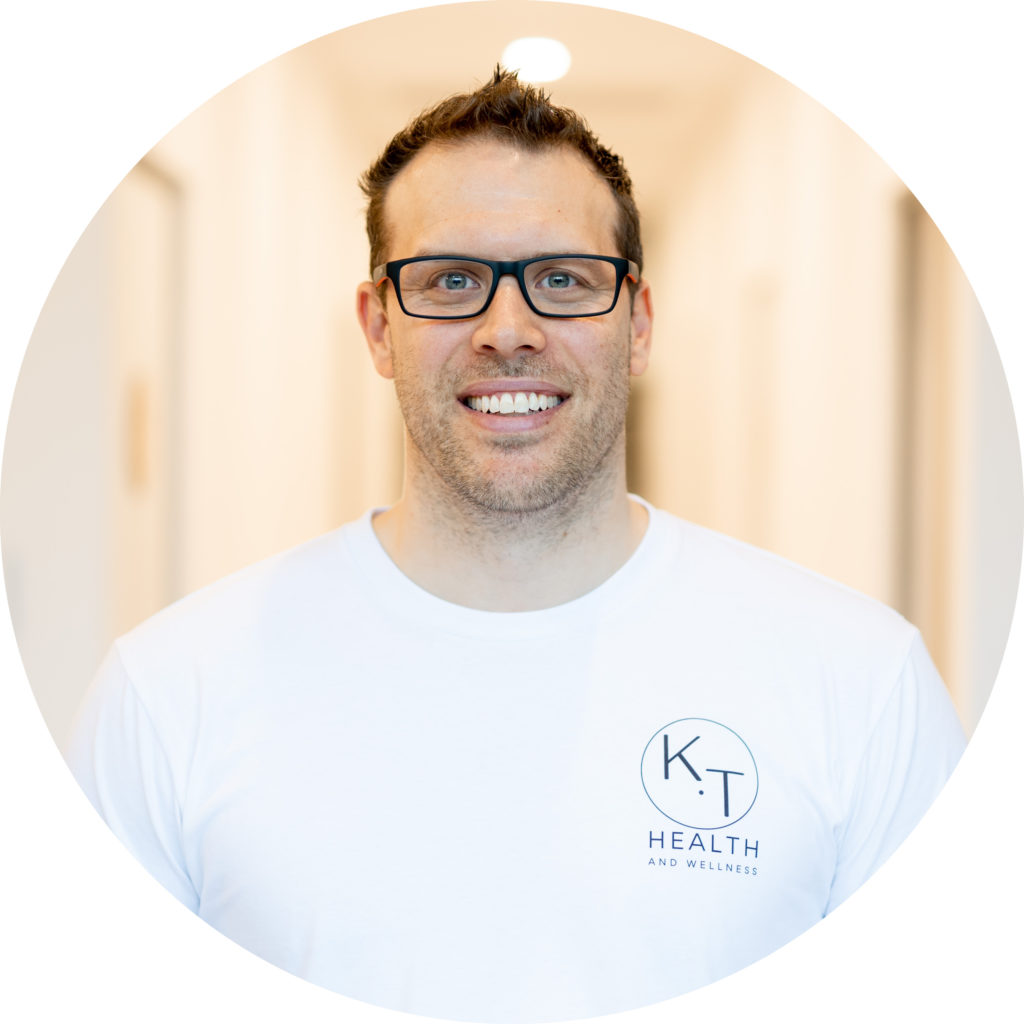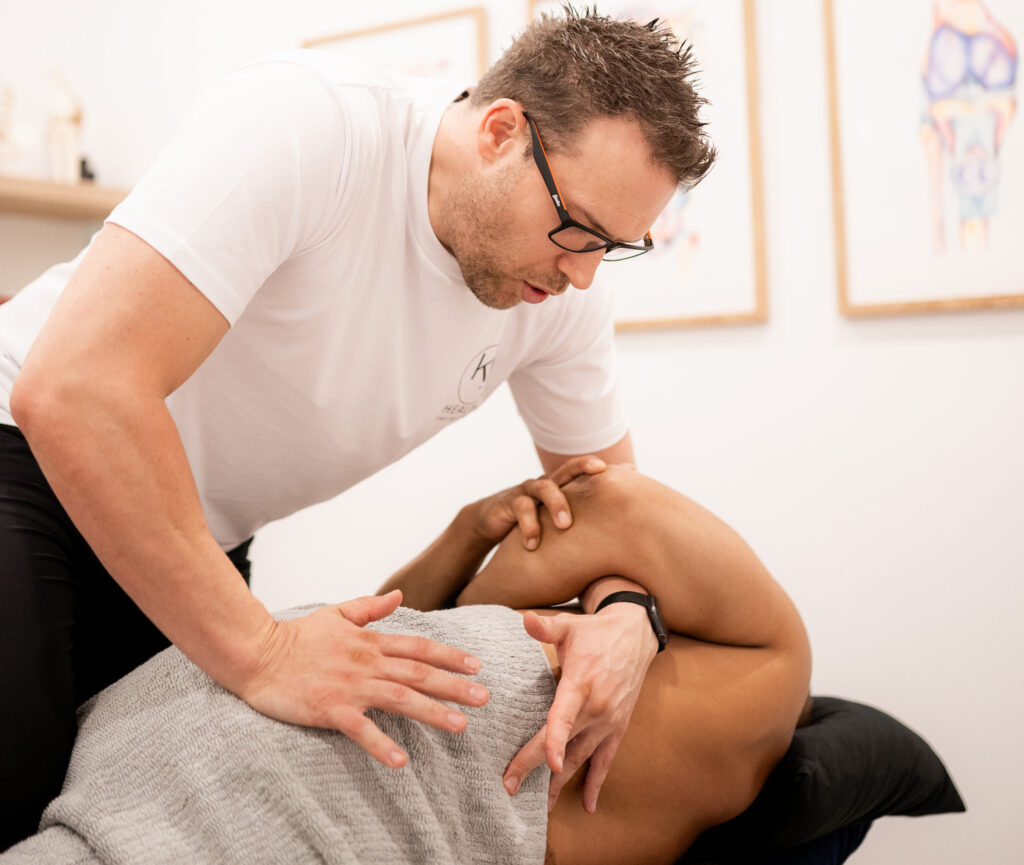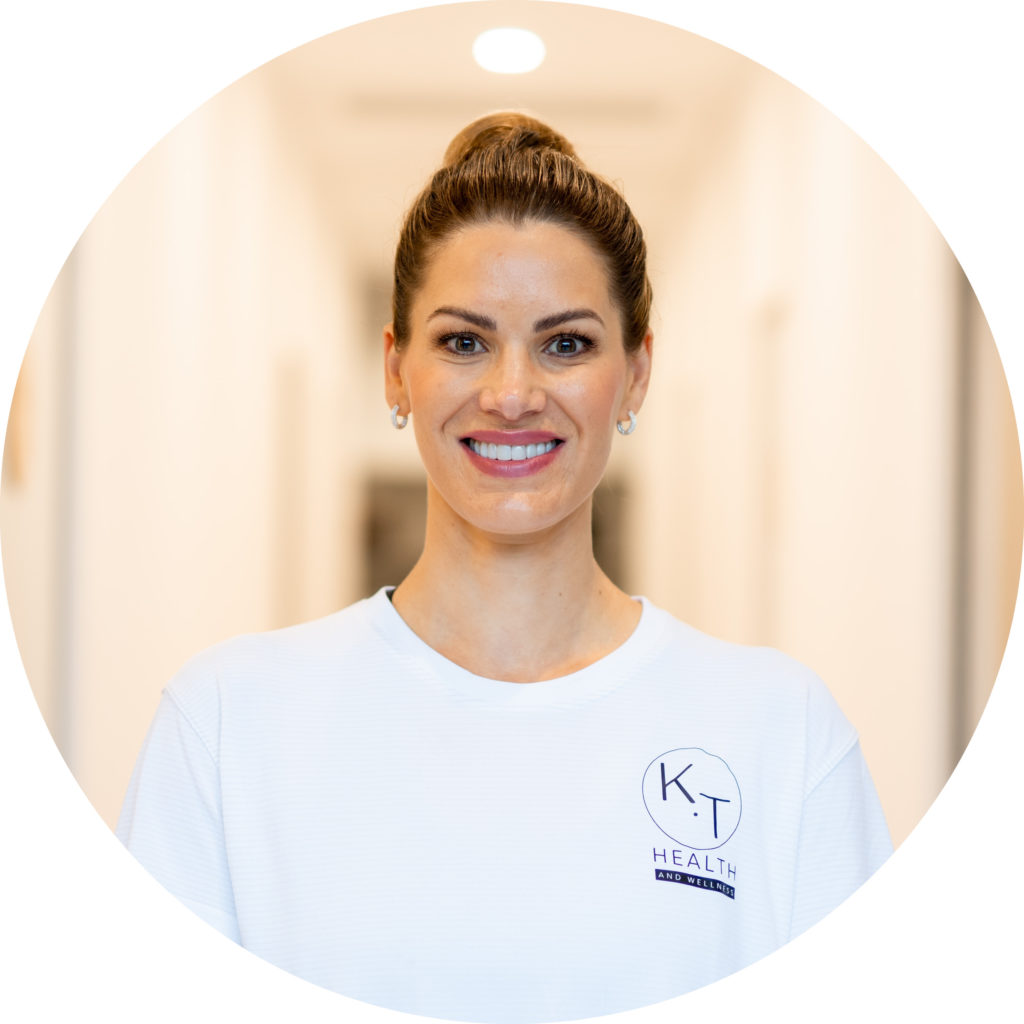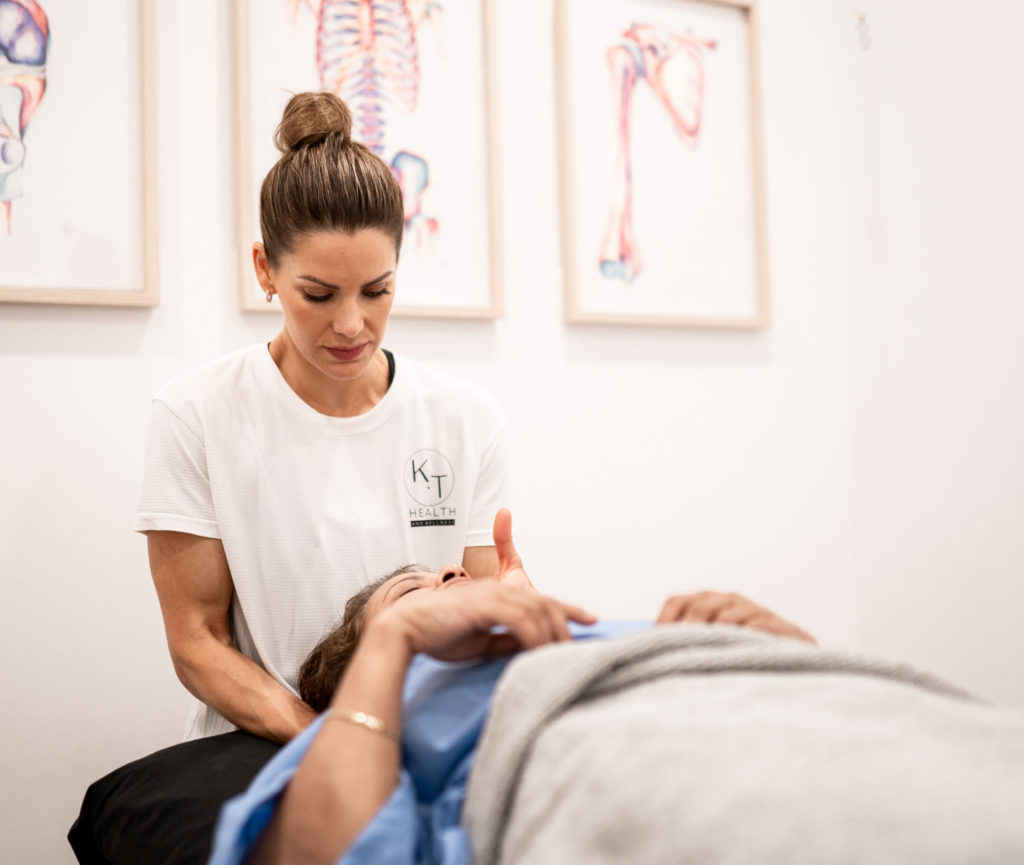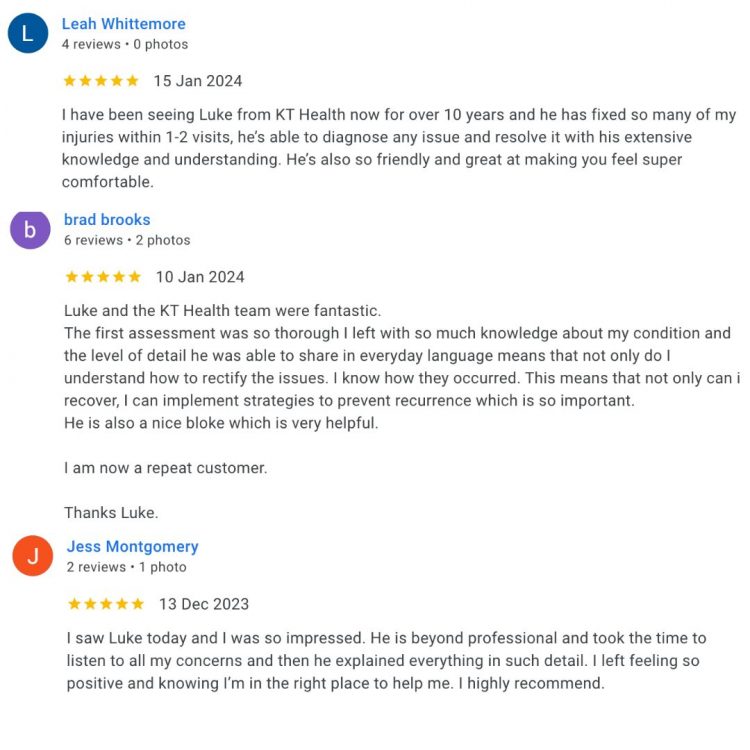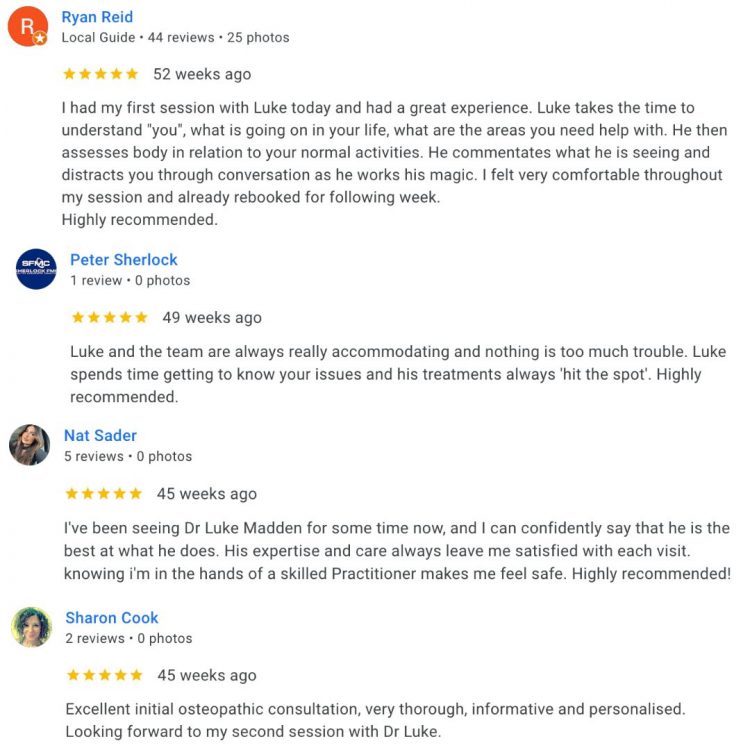Everything You Need to Know About an ACL Tear
What is an ACL Tear?
An ACL tear is when the anterior cruciate ligament, one of the major ligaments inside the knee, gets stretched, partially torn, or completely torn. It’s a common injury in sports that involve sudden stops, cutting, or jumping, like football, netball, basketball, or skiing.
An analogy…
Think of the ACL like a strong rope that connects your thigh bone to your shin bone, keeping the knee stable. If the knee twists too far or moves the wrong way, that rope can fray or snap.
What are other names that an ACL tear can be called?
Torn ACL, ACL Sprain, Sprained ACL, ACL Injury, Ruptured ACL
What causes an ACL tear?
The ACL connects the femur (thigh bone) to the tibia (shin bone) and stops the tibia from sliding forward too much. It also helps control twisting movements of the knee. A tear happens when there’s a sudden pivot, change of direction, awkward landing, or direct impact, causing the ligament to stretch or rupture under force.
What are the signs and symptoms of an ACL tear?
- A loud pop or crack at the time of injury
- Sudden, severe pain in the knee
- Rapid swelling within hours
- Feeling of instability or giving way when walking or trying to pivot
- Limited range of motion
- Weakness or inability to continue activity immediately after the injury
What tests are used to diagnose an ACL tear?
Lachman test: Checks how much the shin bone moves forward (a key sign of ACL damage).
Anterior drawer test: Another way to test forward movement of the tibia.
How long does an ACL tear take to heal?
- Partial tears (non-surgical): 6–12 weeks with rehab
- Full ACL tear with surgery (ACL reconstruction): 9–12+ months for full return to sport
- Without surgery: return to daily activities may take 3–6 months with proper rehab, but high-level sports are often limited
How does an ACL tear happen?
- Sudden twisting, pivoting, or cutting movements
- Awkward landings from jumps
- Direct blow to the knee, like in a tackle
- Poor strength or stability around the hips, core, or knee
- Fatigue, which increases injury risk
- Improper footwear or surface traction
What treatment can help an ACL tear?
- R.I.C.E. protocol
- Rest from activity
- Gradual strengthening exercises
- Soft tissue massage
- Bracing
What exercises or stretches can I do for an ACL tear?
- Knee Bend to Straighten
- Static Quadriceps Contraction
- Static Hamstring Contraction
What products can help with an ACL tear?
Gentle half squat
Stand up straight facing a wall or supporting surface.
Your feet should be hips width apart.
Keeping your gaze directly ahead, hold on and bend your knees a little.
Ensure your knees travel directly forwards over your toes.
Do not allow them to turn inwards.
Push through the heels of your feet and tighten your buttock muscles to return to the upright position.
Ensure your gaze remains directly ahead and your back straight at all times.
Continue this movement.

Heel slides
Lie on your back with your legs straight.
Bend the symptomatic leg as far as you can, sliding your heel towards your buttocks, keeping the knee pointing to the ceiling throughout this movement.
Slide the heel back down, reversing the movement until your leg is straight again.

Calf raise
Start in a balanced stance with your feet shoulder width apart and then raise yourself up on your toes as high as possible.
Return back to the starting position.

Lunge
Stand upright with your legs at shoulder-width apart and your hands on your hips with the fingers facing in towards your stomach.
Take a medium sized pace forward and then enter into a lunge by lowering your body downwards using your legs.
Allow the forward knee to bend until your thigh is parallel to the floor making sure you keep your back straight.
Return to the starting position by springing up off the front leg.
Repeat for the other leg.
Keep your abdominals tight and your feet shoulder-width apart throughout the exercise.
Perform this exercise at a slow controlled pace.

STOP GUESSING – START MOVING
See what other people have said about our osteopaths
Trustindex verifies that the original source of the review is Google. KT health has really helped my back and i have been able to get back into competitive sportTrustindex verifies that the original source of the review is Google. Absolutely amazing, I see Louie Nouh who always listens and caters to my needs. He is amazing at his job and always helps alleviate my pain. I highly recommend Louie.Trustindex verifies that the original source of the review is Google. Friendly, supportive staff. Such a lovely place to exercise! Highly recommend.Trustindex verifies that the original source of the review is Google. Amazing instructor, I am new to Pilates felt very comfortable & supported.Trustindex verifies that the original source of the review is Google. I have been suffering from shoulder and neck pain for months - I saw Dr Louie Nouh a couple of time. His treatment really relived the pain. I have full range of movement now. His knowledge on exercise is fantastic.Trustindex verifies that the original source of the review is Google. Absolutely love reformer at menai. Instructors are amazing. Love Michaela and love the small classes. Highly recommend!Trustindex verifies that the original source of the review is Google. The trainers are all amazing , they explain everthing step by step and help where needed . It is an amazing place to relax get to know other people have a laugh . I recommend for anyone .Trustindex verifies that the original source of the review is Google. Ever since I came here I’ve been looked after by Louie and my shoulder is already feeling much better. Highly Recommend these are good people.Trustindex verifies that the original source of the review is Google. SENSATIONAL Chiropractor in Menai! I attended my first appointment with Dr Louis Nouh at KT Health & Wellness who is an absolute genius even after one session with him. He explained everything he intended to address about my lower back condition, all in easy to understand, layman’s terms. He said he would call me the next day to follow and see how I was feeling after our session and guess what, he did! During our session, he made me feel relaxed and comfortable especially as it was my first chiropractic appointment EVER! For some reason, I am actually looking forward to my subsequent sessions with him next week. Don’t get me wrong, he did poke, prod and crack me as necessary but the results made it seem worth it.Trustindex verifies that the original source of the review is Google. I have been seeing Melinda now for a couple of months to help with bursitis in my hip. She is one of the best practitioners I’ve ever seen.. With the use of various tools and techniques she has helped me recover much quicker than I expected. Thanks Mel and see you tomorrow!
We don't offer magic fixes or cures, but a sustainable approach to back pain.
Our Osteopaths will offer you a road map to help you take control of your back pain and feel great again.
BOOK YOUR OSTEOPATH VISIT TODAY
Book a Time with Dr Luke Madden Below
Book a Time with Dr Melinda Madden Below
Already have an account?
Book as a guest
- Book an Appointment

